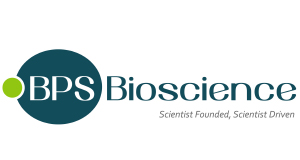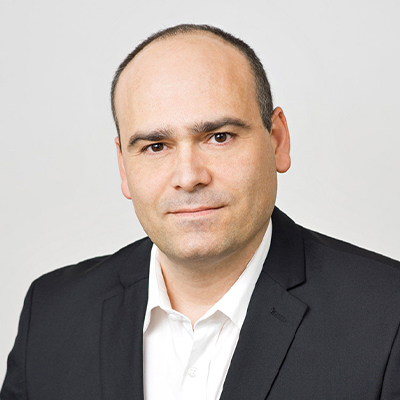Notch1/CSL Luciferase Reporter HEK293 Cell Line
Notch1/CSL Luciferase Reporter HEK293 Cell Line
Artikelnummer
BPS60652
Verpackungseinheit
2 vials
Hersteller
BPS Bioscience
Verfügbarkeit:
wird geladen...
Preis wird geladen...
Products from BPS Bioscience require a minimum order value above 400€
Application: / Monitor Notch signaling pathway activity.
/ Screen for activators or inhibitors of the Notch signaling pathway.
Background: The notch signaling pathway is important for cell-cell communication, which involves gene regulation mechanisms that control multiple cell differentiation processes during embryonic and adult life. Notch signaling also has a role in neuronal function, embryonic development, angiogenesis, cardiac homeostasis, and bone regeneration. Notch signaling is dysregulated in many cancers, and faulty notch signaling is implicated in many diseases including T-ALL (T-cell acute lymphoblastic leukemia) and Multiple Sclerosis.
Biological Activity: The cell line is validated for the inhibition of the expression of luciferase reporter using a known inhibitor of the Notch signaling pathway.
Description: The Notch CSL Reporter - HEK293 cell line contains the firefly luciferase gene under the control of Notch-response elements (CSL responsive elements) alone with expression construct for Notch1 E (NOTCH1 that has a deletion of the entire extracellular domain) stably integrated into HEK293 cells. Inside the cells, the Notch1 E can be cleaved by γ-secretase. The active Notch1 NICD is released to nucleus and induces the constitutive expression of luciferase reporter. The cell line is validated for the inhibition of the expression of luciferase reporter using a known inhibitor of the Notch signaling pathway.
Format: aqueous solution containing DMSO
Host Cell Line: HEK293
Mycoplasma Testing: The cell line has been screened using the PCR-based Venor™GeM Mycoplasma Detection kit (Sigma Aldrich) to confirm the absence of Mycoplasma species.
Storage Stability: Store in liquid nitrogen immediately upon receipt.
Supplied As: Each vial contains ~1.5 X 10^6 cells in 1 ml of 10% DMSO.
Warnings: Avoid freeze/thaw cycles.
Biosafety Level: BSL-2
Transfection Method: Lipofectamine 2000
References: 1. Lu, FM et al. (1996). Proc. Natl. Acad. Sci. USA 93(11): 5663-5667.
2. Kanungo, et al. (2008). J. Neurochem. 106: 2236.
Application: / Monitor Notch signaling pathway activity.
/ Screen for activators or inhibitors of the Notch signaling pathway.
Background: The notch signaling pathway is important for cell-cell communication, which involves gene regulation mechanisms that control multiple cell differentiation processes during embryonic and adult life. Notch signaling also has a role in neuronal function, embryonic development, angiogenesis, cardiac homeostasis, and bone regeneration. Notch signaling is dysregulated in many cancers, and faulty notch signaling is implicated in many diseases including T-ALL (T-cell acute lymphoblastic leukemia) and Multiple Sclerosis.
Biological Activity: The cell line is validated for the inhibition of the expression of luciferase reporter using a known inhibitor of the Notch signaling pathway.
Description: The Notch CSL Reporter - HEK293 cell line contains the firefly luciferase gene under the control of Notch-response elements (CSL responsive elements) alone with expression construct for Notch1 E (NOTCH1 that has a deletion of the entire extracellular domain) stably integrated into HEK293 cells. Inside the cells, the Notch1 E can be cleaved by γ-secretase. The active Notch1 NICD is released to nucleus and induces the constitutive expression of luciferase reporter. The cell line is validated for the inhibition of the expression of luciferase reporter using a known inhibitor of the Notch signaling pathway.
Format: aqueous solution containing DMSO
Host Cell Line: HEK293
Mycoplasma Testing: The cell line has been screened using the PCR-based Venor™GeM Mycoplasma Detection kit (Sigma Aldrich) to confirm the absence of Mycoplasma species.
Storage Stability: Store in liquid nitrogen immediately upon receipt.
Supplied As: Each vial contains ~1.5 X 10^6 cells in 1 ml of 10% DMSO.
Warnings: Avoid freeze/thaw cycles.
Biosafety Level: BSL-2
Transfection Method: Lipofectamine 2000
References: 1. Lu, FM et al. (1996). Proc. Natl. Acad. Sci. USA 93(11): 5663-5667.
2. Kanungo, et al. (2008). J. Neurochem. 106: 2236.
| Artikelnummer | BPS60652 |
|---|---|
| Hersteller | BPS Bioscience |
| Hersteller Artikelnummer | 60652 |
| Verpackungseinheit | 2 vials |
| Mengeneinheit | PAK |
| Wirt | Human |
| Produktinformation (PDF) | Download |
| MSDS (PDF) |
|

 English
English







